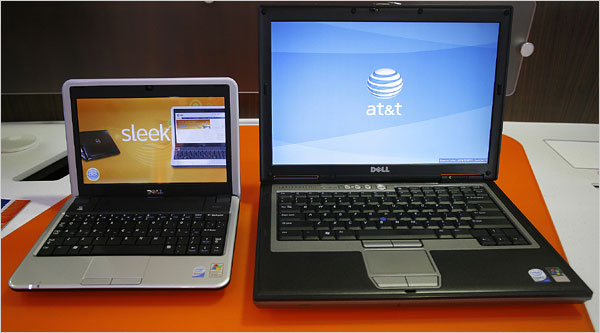<p>The crazes for ultrabooks and tablets have come to dominate our collective consumer consciousness, as these must-have devices jostle constantly for our attention, competing for hearts, minds and wallets alike. But there&#8217;s one category that&#8217;s been a little quiet since Apple took to dissing it on stage during the 2010 iPad launch announcement: the netbook. Back in 2009, the ultra-trimmed-down laptops were all the rage. So what&#8217;s happened to the netbook? Does it still exist in its own right, or has it gradually evolved in to another category altogether?<br />
<strong>Netbook: a definition</strong><br />
So, <span style="text-decoration: underline;">what is a netbook</span>? A tiny laptop. No, really. Back in 2007, we were all going mental about miniaturisation: everything tech had to be as small as possible. Of course, now we recognise that our misplaced sense of value was in fact seeking devices that are as <em>minimally invasive</em> as possible, with physical size being only one part of that puzzle.<br />
Netbooks are typically ‘legacy-free’: no optical drive, no moving parts (if possible), tiny keyboards, cut-down processors. They’re also – partly as a result of leaving so much stuff out, and partly by design – much cheaper than regular laptops. Some wireless data carriers began offering netbooks free of charge with extended service contracts as early on as 2009.<br />
<strong>Who bought them?</strong><br />
Netbooks appealed to a very niche crowd. Despite the fact that they seemed to represent the zenith of the design philosophy of the time – ‘smaller is better’ – few people found them particularly practical. Because they were small, they were unpleasant to use for extended periods of time. Display technology was yet to reach a point at which a tiny 11-inch display could push anything with more than a handful of pixels. Because they were cheap, they tended to be crafted from substandard, plasticky materials.<br />
However, netbooks <em>did </em>catch on among some technologists. Given that 2007 saw the <em>first</em> real smartphone, the iPhone, hit the market (and to a lukewarm reception) – and it wasn’t until 2010 that the first really popular tablet (the iPad) came along – early adopters were cautiously picking the netbook out as the form factor of the future. Of course, they weren’t entirely wrong: the netbook is far from dead. It has evolved.<br />
<strong>Where is the netbook now?</strong><br />
Apple’s 2010 iPad announcement – in which they concluded that netbooks “aren’t very good at anything at all” – was taken by many to be the final nail in the netbook coffin. However, the form-factor endured. In 2011, Apple updated its MacBook Air line – formerly the proclivity of the eccentric millionaire stylerati – to include an 11-inch, tiny, legacy-free version. The tech world was shocked: only one year previously, Apple had concluded that the entire netbook factor was a waste of time.<br />
The runaway success of the relaunched, redesigned MacBook Air encouraged other manufacturers to push the netbook platform a little further. And so, in 2012, Intel announced their support for a new personal computing class: ultrabooks. Unlike netbooks, though, Intel would maintain a strong grip on the ultrabook definition: each year, the American tech giant releases a brand new set of specs to which manufacturers must adhere if they want to call their product an ‘ultrabook’. Analysts predicted that this would lead to divergence in the mobile laptop market, with manufacturers evading Intel’s restrictive licensing by building ‘ultraportables’, or ‘ultrathins’. There’s little evidence of this, though; ‘ultrabooks’ have, in wholesale fashion, come to comprise a growing number of popular products. In fact, market research analysts <em>IHS iSuppli</em> predict that ultrabooks will lead a spurt of growth in the laptop market in the second half of 2013: a market that has been losing out to tablet sales over the past year.<br />
So, the humble netbook is still going strong. It’s enjoyed a rebranding, a tightening up of specifications, and a refocus on usability and practicality over miniaturisation, but it’s still the same category of device at its heart. Mobility, weight, battery life and power are all included as part of the Intel Ultrabook specification: all selling points that netbooks sought to occupy. Now, though, the platform has the coherent support of the world’s largest technology manufacturers behind it. Over the next few years, we’ll see where that takes us.</p>

What Happened to Netbooks?
